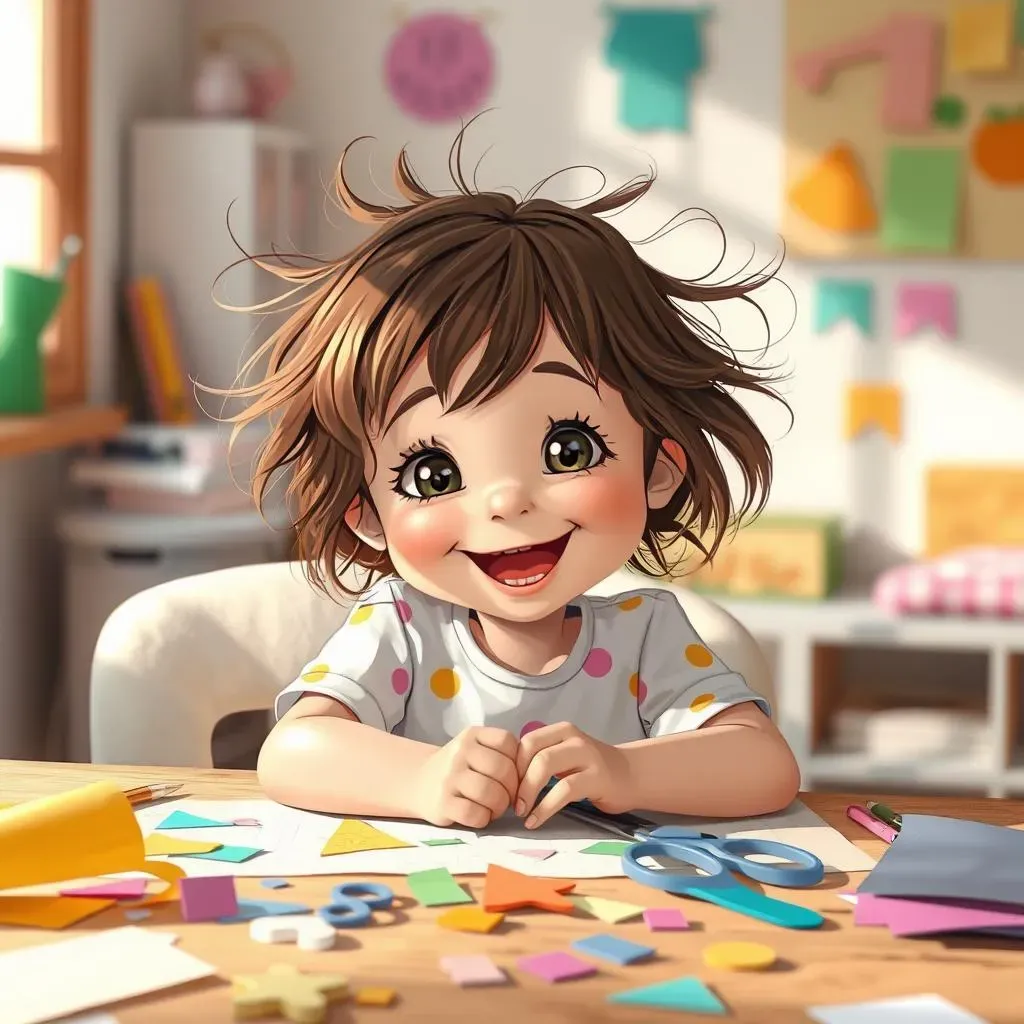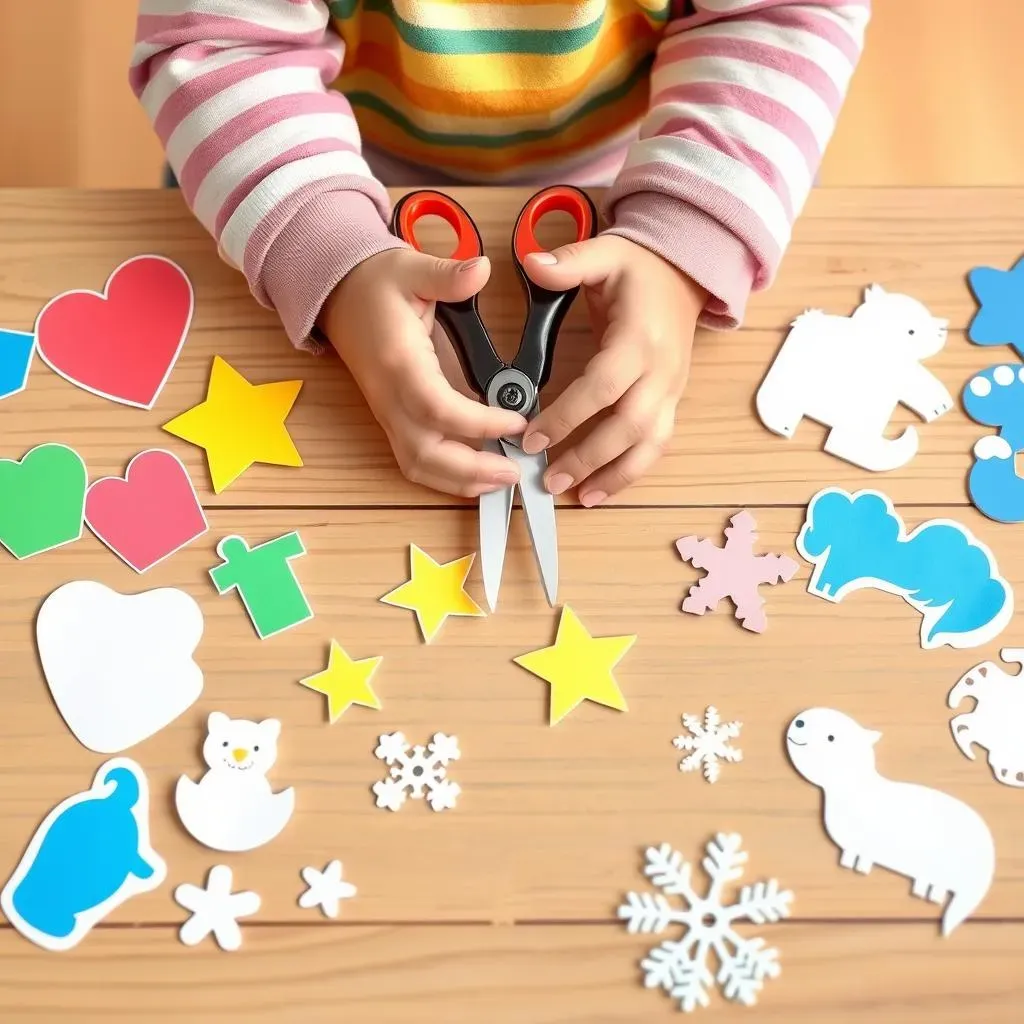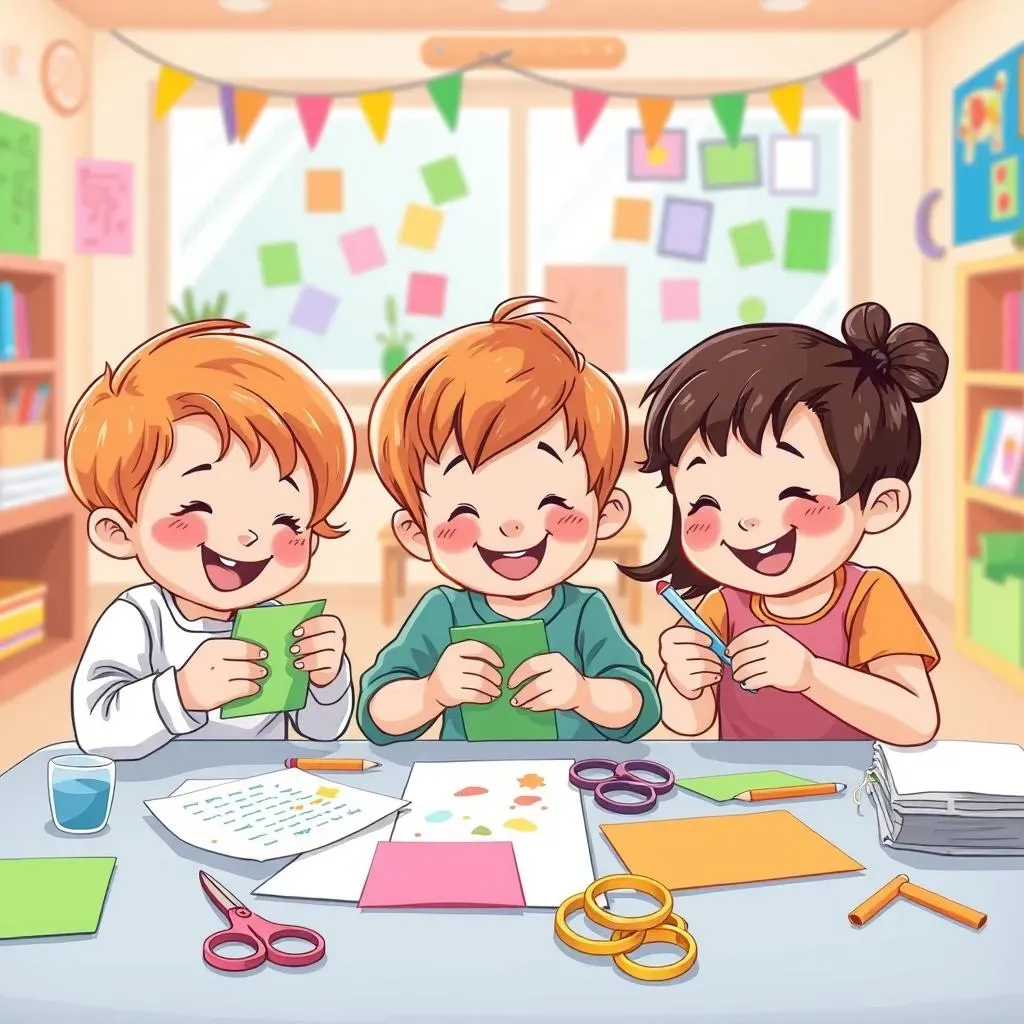Table of Contents
Ever watched a preschooler with a pair of scissors? It's a mix of focus, determination, and maybe a little bit of chaos. But here's the thing: paper cutting isn't just about snipping away; it's a super important activity for little ones. It helps them build crucial fine motor skills, those tiny movements that are key for everything from writing to buttoning a shirt. In this article, we're going to explore the world of paper cutting for preschoolers, showing you why it’s so beneficial and how to make it a fun, engaging learning experience. We will start with the benefits of paper cutting, followed by some fun and easy paper cutting projects perfect for those tiny hands, and end with safety tips to make sure the adventure is both productive and safe. Get ready to see paper cutting as more than just a craft; it's a building block for your child's development and a canvas for their creativity. Let’s get snipping!
Why Paper Cutting is a Big Deal for Little Hands
Why Paper Cutting is a Big Deal for Little Hands
Building Fine Motor Skills
Okay, so you might think paper cutting is just about making pretty shapes, right? Nope, it's way more than that! It's like a tiny workout for those little hand muscles. When kids use scissors, they're actually building fine motor skills. These are the small movements we use for everything, from holding a pencil to using a fork. Think of it like this: each snip is like a mini-rep at the gym for their hands. The more they practice, the stronger and more coordinated their fingers become. It's not just about cutting; it's about preparing them for all sorts of tasks down the road.
It’s also about hand-eye coordination. They're learning to watch where the scissors are going and making their hands follow along. It's like teaching their eyes and hands to work together as a team. This coordination is crucial for writing, drawing, and even playing sports. So, when you see a kid cutting a wonky circle, don't think of it as a failed art project. Think of it as a successful fine motor skill training session. They are learning to control their movements, which is a big deal.
Skill | Why it Matters |
|---|---|
Fine Motor Skills | Essential for writing, drawing, and daily tasks |
Hand-Eye Coordination | Important for sports, art, and reading |
Bilateral Coordination | Using both hands together for complex tasks |
Boosting Creativity and Focus
Beyond the physical benefits, paper cutting is a fantastic way to spark creativity. Kids start to imagine what they can create with a simple piece of paper and some snips. Maybe it's a monster, a flower, or a spaceship. Whatever it is, it’s their own creation. Plus, the act of cutting requires focus. They have to pay attention to the lines, control the scissors, and think about what they are doing. This kind of focused attention is a great skill to develop, and it can help them concentrate in other areas of life too.
It’s also a fantastic way for kids to express themselves. Maybe they’re feeling silly, so they cut out a funny face. Or maybe they want to make a special gift for someone, so they create a beautiful paper heart. Paper cutting gives them a way to show how they feel. So, it's not just about cutting paper; it’s about unleashing their inner artist and helping them express all sorts of emotions. It also teaches them that a simple piece of paper can become anything they can imagine.
Cool Paper Cutting Projects for Preschoolers
Cool Paper Cutting Projects for Preschoolers
Simple Shapes and Snips
Alright, let's get to the fun part: the projects! When starting out with paper cutting for preschoolers, keep it super simple. Think basic shapes – squares, triangles, and circles. You can draw these on colored paper and let your little one snip along the lines. It's like a colorful puzzle they get to create themselves. Another great idea is to cut fringes along the edge of a piece of paper. It's a simple way to practice the scissor motion without needing complicated lines. These simple snips help them get the hang of how the scissors work, and they feel a sense of accomplishment with each cut.
Then, move on to making paper snowflakes! Fold a piece of paper a few times, make some random cuts, and unfold to reveal a unique design. No two snowflakes will ever be the same, and that’s part of the fun. It's like a little bit of winter magic happening right in your living room. You can also try cutting out basic animal shapes – a simple fish, a bird, or a cat. The key is to start easy and slowly increase the difficulty as their skills improve. Remember, it's all about the process, not just the end result, so let them enjoy the snipping and creating.
- Start with basic shapes: squares, circles, triangles.
- Try cutting fringes along the edge of paper.
- Make paper snowflakes for a fun, creative activity.
- Cut out basic animal shapes like fish, birds, or cats.
Fun and Themed Projects
Once they’ve mastered the basics, it's time to amp up the fun with themed projects. How about making paper chains? Cut strips of colorful paper and loop them together to create a festive decoration. It’s a great way to practice cutting straight lines and it's something they can actually play with afterwards. Another fantastic idea is to create paper collages. Cut out different shapes and sizes from various colored papers and let them glue them onto a larger sheet to create a unique piece of art. It's a great way to combine cutting with other skills, like pasting and arranging.
You can also tie paper cutting into stories or themes that they are interested in. If they’re fascinated by dinosaurs, help them cut out dinosaur shapes. If they love the ocean, they can cut out fish and seaweed. You can even make paper puppets by cutting out simple figures and attaching them to popsicle sticks. This makes cutting even more engaging and lets their imagination run wild. The possibilities are endless, and it's all about making learning fun. It’s like adding a little bit of adventure to every snip.
Tips and Tricks for Safe and Successful Paper Cutting
Tips and Tricks for Safe and Successful Paper Cutting
Safety First
Okay, let's talk safety, because tiny hands and sharp objects need a bit of a plan. First off, always use child-safe scissors. These aren't the sharp, pointy ones you might have in your junk drawer. They have rounded tips and are designed to cut paper, not skin. It’s like giving them a tool that’s designed for the job and not for accidents. Make sure they are using the scissors correctly. Show them how to hold the scissors, how to open and close them, and how to move them along the paper. It’s all about technique, not just brute force. Also, keep a close eye on them while they're cutting. It’s not about hovering, but being there to guide them and make sure they're not getting into any scissor-related trouble. Think of yourself as their cutting coach, there to help them succeed without any mishaps.
Another crucial tip is to teach them about using scissors only for paper. No cutting hair, clothes, or furniture! This helps them understand the purpose of the tool and keeps everyone safe. Always remind them to cut away from their body, not towards it. It’s like giving them a little safety dance to do with their scissors. And make sure the cutting area is well-lit and clutter-free. You don't want them tripping over toys or working in a dark corner. It’s all about creating a safe and comfortable space for them to explore their creativity. Remember, safety isn't about being overly cautious, it's about making sure they can have fun while learning new skills.
- Always use child-safe scissors with rounded tips.
- Show them how to hold and use scissors correctly.
- Supervise them closely while they are cutting.
- Teach them that scissors are only for cutting paper.
- Ensure the cutting area is well-lit and clutter-free.
Making it Easy and Fun
Now, let’s get into making paper cutting fun and easy. Start with paper that’s not too thick. Construction paper is great because it’s easy to cut, and it comes in lots of fun colors. It’s like giving them the perfect canvas for their creations. If they’re having trouble with the scissors, try using paper with lines or shapes already printed on it. This gives them a guide to follow and can make the cutting process feel less overwhelming. It’s like giving them training wheels for their scissors. And don’t be afraid to get creative with the tools. There are also special scissors that cut in different patterns, like zigzags or wavy lines. It adds a little extra flair to their projects. It’s all about making the experience interesting and engaging.
Remember, patience is key. Some kids pick up paper cutting quickly, while others might need more time. It’s like learning to ride a bike – everyone goes at their own pace. Celebrate their efforts, not just their results. Even if their cut looks a little wonky, praise their effort and how hard they are trying. It's about building their confidence and encouraging them to keep practicing. And don’t forget to make it a social activity. Cut paper together, talk about what you are making, and have fun doing it. It’s like turning a simple task into a bonding experience. Paper cutting isn’t just about skills; it's about creating memories and having a good time together.
Tip | Why it Helps |
|---|---|
Use thinner paper | Easier for small hands to cut |
Use paper with lines or shapes | Provides a guide for cutting |
Try patterned scissors | Adds fun and variety |
Be patient and encouraging | Builds confidence and enthusiasm |
